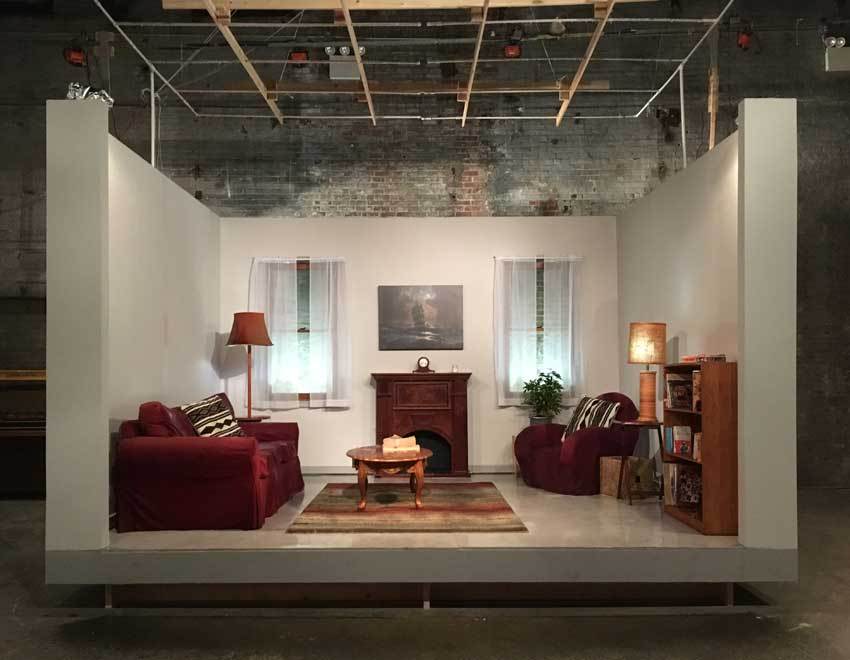Greenpoint gallery The Boiler is closing. The theme of its last exhibit? Death

The first day of spring brought sun and 50-degree temperatures to Greenpoint. But inside The Boiler, a gallery on North 14th Street, it is raining.
Piping spits down raindrops onto the set of a staged living room in a building, which is, as indicated by its name, a former factory boiler room. It has been raining inside The Boiler for a month now. The red fabric of the couch is discolored; the books on the shelves are permanently warped. Muddy footprints dot the white wood floors.
The living room, designed by conceptual artist Stephen Kaltenbach, is the first three-dimensional installation based on a drawing by Kaltenbach of the same name: “What Death Does.” This piece feels at home in the otherwise empty industrial space, and comes to the gallery with apt timing, as Kaltenbach’s exhibit will likely be The Boiler’s last.
